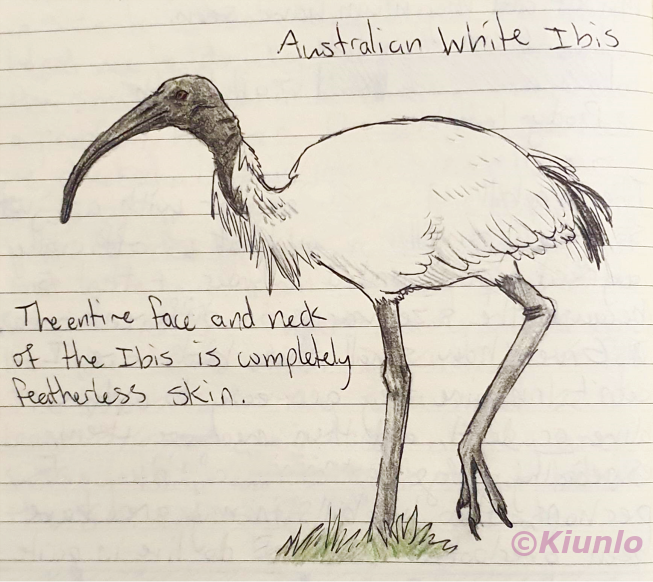Entry 23
Saturday 18th June 2022
3:16pm
Came back from a walk a bit of a while ago and saw two “new” birds that I’ve not seen in quite a while. The first birds I saw were a small flock of what looked like large white birds that were flying high up in the sky. I initially thought that they were Little Corellas that were a bit late to the party as there was already a large flock of Corellas close by. This small flock of unidentified white birds circled down further until they landed in a big tree not too far from where the Little Corellas were nesting. It was then that I realised they were actually White Ibises. I told my mum about it, and she said that they usually appear in our town in July, so they’re actually a month early (likely due to the changing climate).
The second birds I saw were very, very small. To me, they looked like a female Superb Fairy Wren with a short tail, and the birds were quite smaller in size to actual Fairy Wrens. My mum helped me to identify the birds as Weebills, the smallest bird in Australia. There was a problem, however. On all the sources we checked, it said that Weebills are 8-9 cm in length, from the tip of the beak to the tip of the tail, which I believed was far too big. In the effort to try and compare the Superb Fairy Wrens officially stated size to the officially stated size of the Weebill, and then comparing the size to what I actually saw with my eyes in order to get an accurate size of the Weebills I saw, I have found that the officially stated sizes of BOTH the Weebill and the Superb Fairy Wren do not match up to the sizes of the birds in our local area in northern NSW, causing a whole lot of confusion on my end, and so I will try to explain it as simply as possible.
What I know for certain is that the Weebills in my town are smaller than Superb Fairy Wrens. This is true for for all officially stated sizes of both birds too. However, the Superb Fairy Wrens in our area are smaller than 14-15 cms, which is what is stated on Wikipedia and some other sources. I took a video a while back of a female Superb Fairy Wren coming close to my mum’s foot, and in the video both my mum’s foot and the Fairy Wren are in the same frame. By measuring my mum’s foot (22 cm long), and enlarging the screencap of the video until her foot was approximately 22 cm on my screen, and then measuring the Superb Fairy Wren on my screen, the bird was about 9-10 cm long from beak to tail tip. The officially stated size of the Weebill, smallest bird in Australia, is 8-9 cm long, meaning that the two birds would have to be close to the same size, but the Weebills in my area are MUCH smaller than the Superb Fairy Wrens, and I would say in my local area they are closer to 5-6 cm long, when basing it on the actual sizes of Superb Fairy Wrens in my town.
This makes me wonder how exactly people measured the sizes of both birds in the first place, and if the sizes vary differently based on location. My mum has said that some birds are bigger further down south near Sydney, but I’ve not been able to find much information about that on the internet. Either way, I think they should get people to properly measure the birds in our town since although it’s just a few cm difference in size, for such small birds, especially the Weebill, a few cm is kind of a big deal.
The smallest species of bird in the entire world is also only 5.8 cm long, and the Weebills in our local area are of a similar size, which could potentially bring the Weebill up to being not just the smallest bird in Australia, but possibly the second smallest bird in the entire world, rather than the sixth. All I know for certain is that small birds in rural areas like my town get overlooked, and people don't bother trying to question the true sizes of the birds they come across if they are just casual bird watchers. But 8-9 cm is just far too large for any Weebill I have seen in my town.

